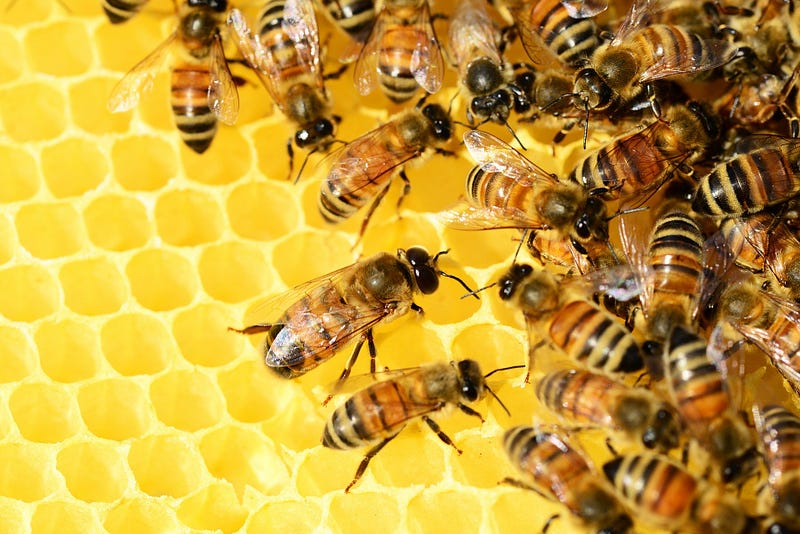Why do bees make hexagon shapes?
By Lauren Voso, Biology with Environmental Science Minor, 2024

Think of the world’s most ingenious and complex feats of engineering. Maybe you thought of creative architectural buildings, grand dams, or modernly designed bridges. But would you ever think the bees in your backyard could engineer something just as innovative as those man-made structures?
As it turns out, the honeycombs the bees call home are more structurally complex than expected. After a quick glance, they seem simple, comprised of a bunch of holes made of wax. But over thousands of years, humans have investigated why honeybees create honeycombs in the way they do. In fact, bees might be better at math than we thought!
To better understand why bees make their honeycombs in such a particular way, it is important to understand their purpose. The process begins when bees collect nectar from flowers and bring it back to their hives. However, the nectar is no good for bees in the form when it comes directly from the flower. The bee who collects the nectar must pass it on to other “processor” bees who refine the nectar and drop it in a honeycomb cell. To store it more efficiently, the bees fan the honeycombs with their wings to evaporate the water in the sugary liquid. This is how the final product, honey, is made. The reduced water content leaves the bees with a concentrated sugar supply, which they use when food may be scarce, particularly in the winters. The bees then seal the honeycombs with wax so that they can safely store it away until they need to tap their reserved supplies.
So the question still stands: why do bees choose to store this precious long-term energy source in hexagon shapes? Why not triangles or circles?
He hypothesized that bees made hexagons because that shape would maximize honey storage with the least amount of wax required to construct them.
In 36 B.C., Marcus Terentius Varro, a Roman scholar, asked the same question. He hypothesized that bees made hexagons because that shape would maximize honey storage with the least amount of wax required to construct them. This would be advantageous to the bees, as wax requires a lot of energy for them to produce. They must consume eight ounces of honey for every ounce of wax produced. Thus, when constructing storage units for their food, bees want to minimize the energy they need for production while maximizing the amount of space for storage.
Varro thought that hexagons must be more compact compared to triangles or squares because they would produce a honeycomb with the smallest total perimeter. However, he was unable to mathematically prove this idea, and neither could any other person for two thousand years. But in 1999, Thomas Hales, a mathematician at the University of Michigan, was finally able to prove the theory, known as the “Honeycomb Conjecture.” In a long and complicated paper, Hales mathematically confirmed that hexagons would create the most efficient organization system for bees’ honey. Due to their structure, when hexagons are placed in a grid, the total perimeter of the entire structure is reduced compared to possible structures comprised of triangles or squares. So what does all this mean for the bees? Did they go to math class and figure out which shape would be the most effective to store their snacks?
Some biologists don’t think that bees intentionally make hexagons. They believe that the bees intend on making circles, which are simpler to create, but gravity shapes the wax circles into hexagons. Many disagree, believing that honeycombs evolved through trial and error to make hexagons. Overtime, they learned that hexagons are the most effective, efficient shapes. Whichever the case, honeycombs are a highly impressive structure that are often overlooked. After years and years of curious humans wondering why honeycombs are shaped the way they are, we can now appreciate the full extent of the mathematical genius of the bee!
Discrete & Computational Geometry (2001). DOI: 10.1007/s004540010071
